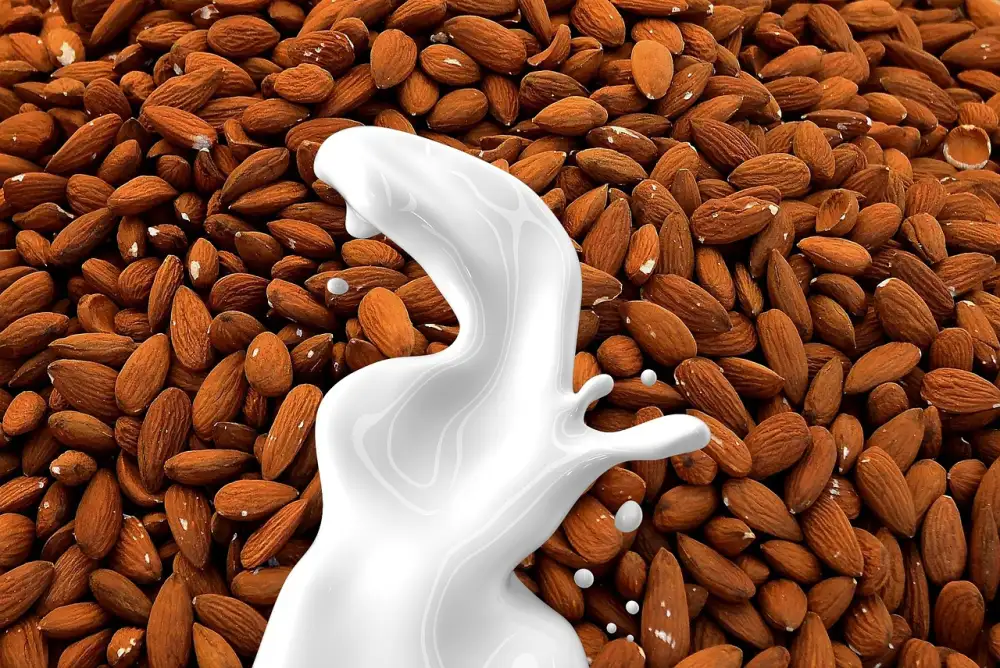Unveiling the Shelf Life of Almond Milk: Does Almond Milk Go Bad? Find Out Here!

Almond milk has gained popularity as a dairy-free alternative, loved for its creamy texture and nutty flavor. But like any other perishable product, almond milk also has a limited shelf life. As a consumer, it is important to understand how long almond milk lasts and how to determine if it has gone bad. In this article, we will delve into the intricacies of almond milk's shelf life, discuss the factors that affect its freshness, and provide storage tips to ensure its quality and safety. So let's uncover the mysteries surrounding the shelf life of almond milk!
Understanding the Expiration Date
When it comes to almond milk, understanding the expiration date is crucial for ensuring its freshness and safety. The expiration date is a label that indicates the estimated time until the product is at its best quality. It is important to note that this date refers to unopened almond milk.
The expiration date is determined by the manufacturer based on various factors, including the processing methods, packaging materials, and preservatives used. It is typically printed on the carton or bottle in a clear format, such as "Best By" or "Use By" followed by a specific date.
Consuming almond milk after its expiration date may not necessarily make you sick, but it might not taste as fresh or have optimal nutritional value. It's always best to adhere to the expiration date for the best experience with your almond milk.
Factors Affecting the Shelf Life of Almond Milk
The shelf life of almond milk can vary depending on several factors. One of the most important factors is the processing method used. Almond milk that has undergone ultra-high temperature (UHT) processing tends to have a longer shelf life compared to those that have been minimally processed.
Another factor that affects the shelf life is the packaging. Almond milk packaged in aseptic cartons or bottles with airtight seals tend to last longer as they are less prone to contamination and oxidation.
The storage conditions also play a crucial role. Almond milk should be stored in a cool and dry place away from direct sunlight and heat sources. Exposure to light, heat, and air can accelerate spoilage and reduce its shelf life.
Furthermore, the quality of almonds used in making almond milk can impact its shelf life. Fresh and high-quality almonds result in a better-quality product with a longer shelf life.
Lastly, additives or preservatives added to almond milk can extend its shelf life. Some brands may use natural preservatives like vitamins C or E, while others may use artificial preservatives. It's important to read the label carefully if you prefer preservative-free options.
By considering these factors, you can ensure that your almond milk stays fresh for longer periods, allowing you to enjoy its deliciousness without worrying about spoilage or safety concerns.
Signs of Spoilage in Almond Milk
While almond milk can last for a considerable amount of time, it is important to be aware of the signs that indicate spoilage. One of the first signs to look out for is a change in texture. If the almond milk becomes lumpy or develops a slimy consistency, it is likely no longer safe to consume.
Another indicator of spoilage is a sour or off-putting smell. Fresh almond milk should have a mild, slightly nutty aroma. If you detect any unpleasant odors, it is best to discard the almond milk.
Additionally, changes in color can also signify spoilage. If the almond milk appears discolored or has developed a yellowish or brownish tint, it is a clear indication that it has gone bad.
Lastly, taste plays an important role in determining if almond milk has spoiled. If the flavor seems off or sour, it is best not to consume it.
It's crucial to note that consuming spoiled almond milk can lead to foodborne illnesses and should be avoided at all costs. Always prioritize your health and dispose of any questionable almond milk promptly.
Proper Storage Tips for Extending Almond Milk's Freshness
Proper storage is crucial for extending the freshness of almond milk. Here are some tips to help you keep your almond milk at its best:
1. Refrigerate: Almond milk should always be stored in the refrigerator, even before opening. The cold temperature slows down the growth of bacteria and helps maintain its quality.
2. Check the expiration date: Always check the expiration date before purchasing almond milk. It is important to consume it before this date to ensure its freshness and safety.
3. Keep it sealed: Once opened, make sure to tightly seal the container after each use. This prevents air and other contaminants from entering, which can lead to spoilage.
4. Avoid cross-contamination: To prevent any potential contamination, never drink directly from the carton or bottle. Instead, pour the desired amount into a clean glass or cup.
5. Store in a cool place: While refrigeration is necessary for opened almond milk, unopened containers can be stored in a cool pantry or cupboard away from direct sunlight.
By following these storage tips, you can extend the shelf life of your almond milk and enjoy it at its freshest for longer periods of time.
In conclusion, it is important to ensure the quality and safety of almond milk by understanding its shelf life and signs of spoilage. Always check the expiration date before consuming almond milk and be aware of the factors that can affect its freshness, such as temperature and exposure to light. If you notice any signs of spoilage, such as a sour smell or curdling, it is best to discard the almond milk. To extend its freshness, store almond milk properly in the refrigerator and consume it within a few days after opening. By following these tips, you can enjoy almond milk at its best and avoid any potential health risks.
Published: 06. 12. 2023
Category: Health



